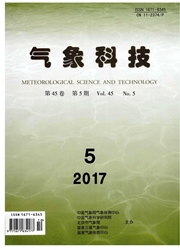

 中文摘要:
中文摘要:
北极是全球气候敏感区域之一,长期以来极地气象观测资料比较缺乏。为了提高北美及全球天气预报的准确性,加拿大航天局联合加拿大环境、气象、国防等部门多个单位共同启动了极地通信和气象卫星(PCW:Polar Communicationand Weather)计划,持续提供50°N以北地区的通信服务和气象遥感观测。在气象方面,PCW将提供北极极地附近地区每隔15/30min的多光谱遥感信息,重点用于高纬度风场反演、海/湖冰、积雪和植被监测,云、气溶胶和火山灰信息反演,这些遥感信息在气候变化研究中将发挥重要作用。简要介绍了PCW计划的进展、卫星观测系统设计、轨道设计、遥感仪器、气象和空间天气的监测产品及应用。
 英文摘要:
英文摘要:
The arctic is one of most climate-sensitive areas in the world, but there is no enough polar meteorological observation data for a long time. In order to increase the weather forecast accuracy for Canada and North America, several departments of Canada, including the environment, meteorological, and defense departments, jointly launched a polar communication and meteorological satellite program (PCW: Polar Communication and Weather). The program will provide continuously communication and meteorological service and remote sensing observation for the region of over 50~N. The meteorological satellite will provide remote sensing information for the arctic region nearly every 15/30 minutes, with the emphases on the retrieval of wind fields for the high-latitude region and the monitoring of sea/lake icing, snow cover, and vegetation, as well as the retrieval of clouds, aerosols, and volcanic ashes, which will play an important role in the researches on global climate changes. A brief introduction is made to the progress of the PCW program, the design, track balance, and remote sensing instruments of the satellite observation system, as well as the meteorological and space weather monitoring products and their applications.
 同期刊论文项目
同期刊论文项目
 同项目期刊论文
同项目期刊论文
 Regression modeling of finite field and anti-electromagnetic design for the ocean surface wind speed
Regression modeling of finite field and anti-electromagnetic design for the ocean surface wind speed 期刊信息
期刊信息
